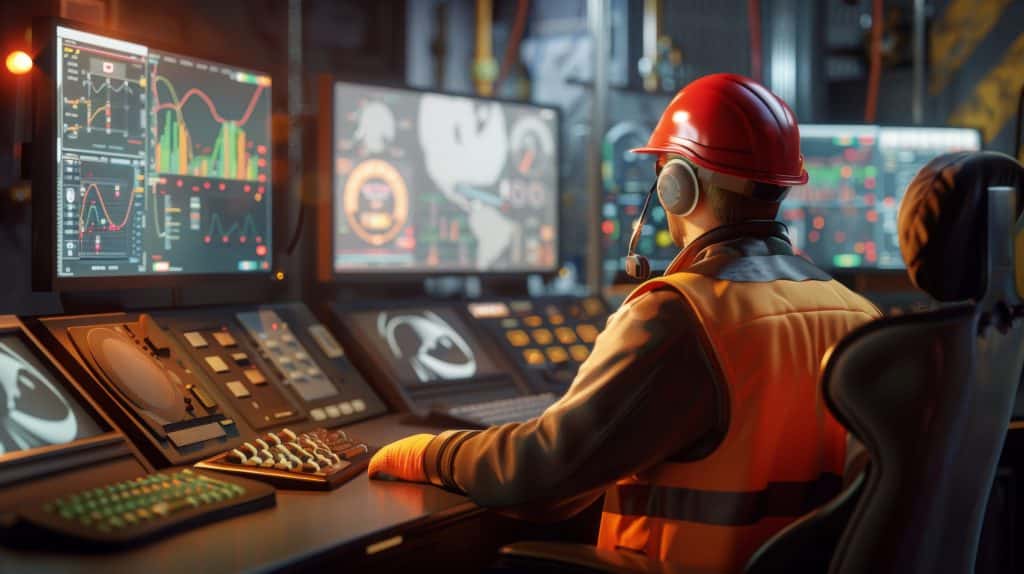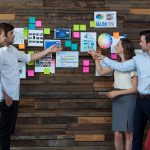Risk management is essential to guarantee any organization's stability and success.
Companies implement risk controls to mitigate risks that help reduce or eliminate threats that may affect their processes, assets, or people.
Next, we will discuss the main types of risk controls and how they can be applied in the corporate environment. Happy reading!
What you will find on this blog:
ToggleWhat are risk controls?
Os controls are methods, procedures, and policies developed to reduce the likelihood and impact of adverse events.
These controls can be preventive, detective, or corrective and are designed to address various types of risks, such as financial, operational, compliance, and technological risks.
Main types of risk controls

Now that you know what risk controls are, let’s explore the main types that can be applied to your company.
1. Preventive controls
Preventive controls aim to prevent problems from occurring by acting proactively. They are essential to minimize the likelihood of unwanted incidents. Common examples include:
- Security and compliance policies:Rules that guide daily operations to ensure everything complies with regulations and standards.
- Continuous training:Regular training for employees helps avoid operational errors and increases risk awareness.
- Preventive maintenance:Periodic inspection and maintenance programs for equipment reduce the chances of failures and unexpected downtime.
These controls protect the company from problems that could have been avoided with proper planning and preparation.
2. Detective controls
Os controls function to identify events that have already occurred, allowing for quick and effective action. They are essential tools to recognize failures, frauds, and irregularities. Examples include:
- Regular audits:Internal and external inspections that analyze compliance with established processes.
- Real-time monitoring systems:Tools that track the operation of assets or operations and instantly identify problems.
- Incident reports:The recording and analysis of past problems help avoid future recurrence.
These controls ensure that failures are identified and dealt with before causing significant damage.
Looking for risk management software? Meet Belt!
3. Corrective controls
Os controls come into play after a problem has occurred. They are crucial for mitigating impacts and restoring operational normality. Some examples include:
- Contingency plans:Strategies prepared to restore the company's operation after an incident.
- Disaster recovery:Plans to reestablish critical systems and processes after a significant disruption, such as natural disasters or cyberattacks.
- Root cause analysis:In-depth investigation to find the origin of the problem and ensure it does not happen again.
These controls are essential to protect the company from prolonged impacts, helping to minimize damage and allowing the business to resume normal operations.
How to apply risk controls in your company?

Implementing an effective risk control system requires planning and integration with the company’s overall strategy. Here are some practical steps for you to start:
- Identify the risks:Analyze all possible risks that could affect your company’s operations, categorizing them by impact level and probability.
- Develop an action plan:After identifying the risks, develop a plan that details how preventive, detective and corrective controls will be applied in each scenario.
- Monitor and adjust the controls:Perform regular audits and monitor operations to ensure the implemented controls function as planned. Adjust as needed to improve efficiency.
- Train the team:Provide continuous training and reinforce the importance of risk controls among employees. When everyone is prepared, the chances of success are much higher.
By following these steps, your company will be prepared to manage risks efficiently, prevent negative impacts, and ensure stable operations.
Count on Belt by Actio to create a risk mitigation plan
Technology plays a vital role in risk management, facilitating the monitoring and implementation of mitigation plans. Belt by Actio allows your company to continuously monitor, assess, and adjust your mitigation plans, ensuring that risks are always controlled.
Moreover, Belt helps to more accurately understand the risks in each activity. This enables the creation of better plans to reduce those risks and implement controls that actually work.
Frequently Asked Questions
1. What are examples of risk controls?
Risk controls can be divided into three main types: preventive controls (like security policies), detective controls (like audits and monitoring systems), and corrective controls (like disaster recovery plans).
2. Why are risk controls essential for business management?
They help identify, manage, and mitigate threats that could compromise operations, prevent financial losses, and keep the company competitive and secure.
3. How to monitor the effectiveness of risk controls?
The effectiveness of risk controls can be monitored through periodic audits, incident reports, and constant process reviews, as well as tracking performance indicators that measure the company’s resilience to risks.
Don’t forget to follow Actio on Instagram, Linkedin and Facebook.
Did you like the content? Tell me in the comments.







